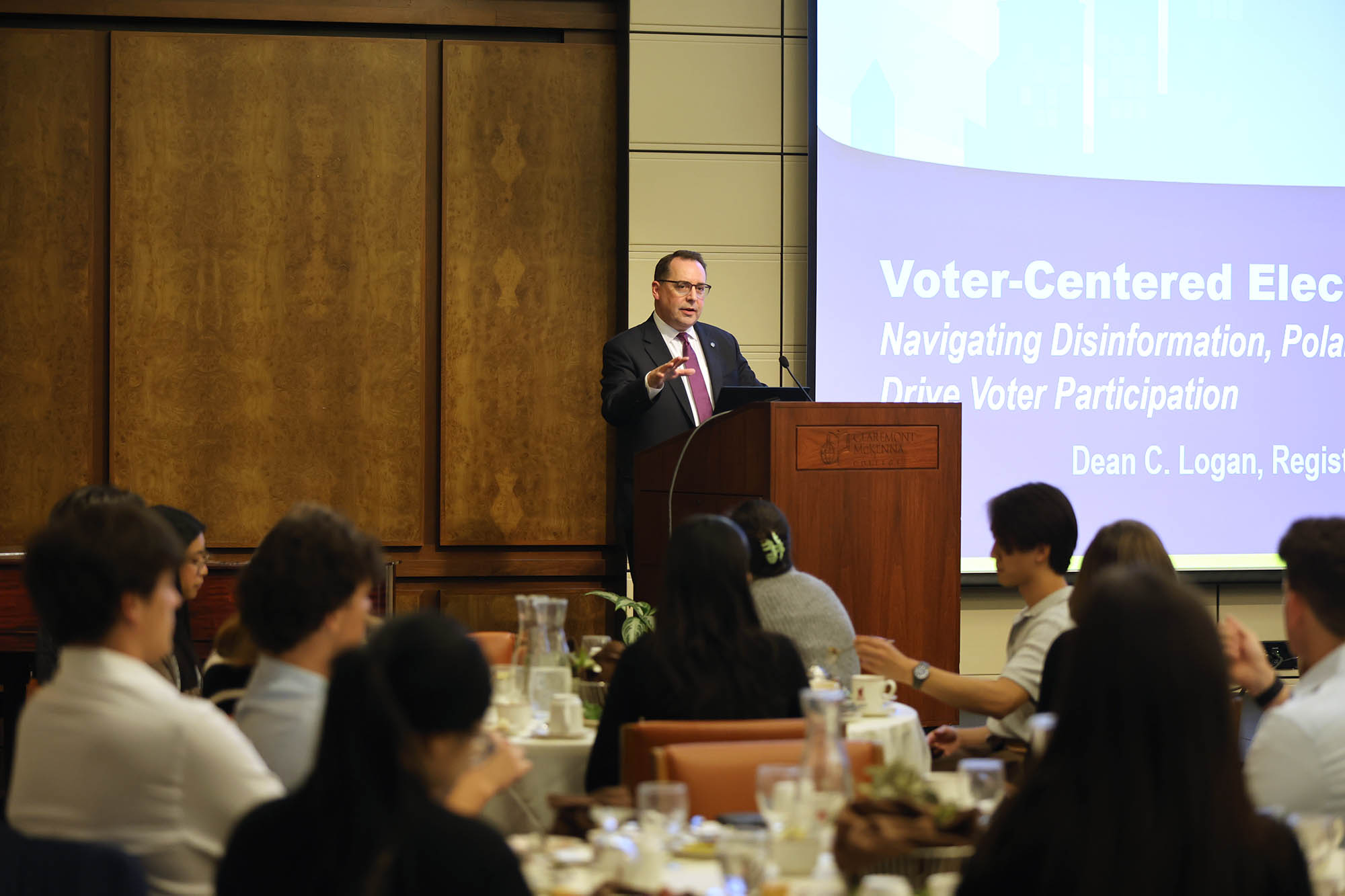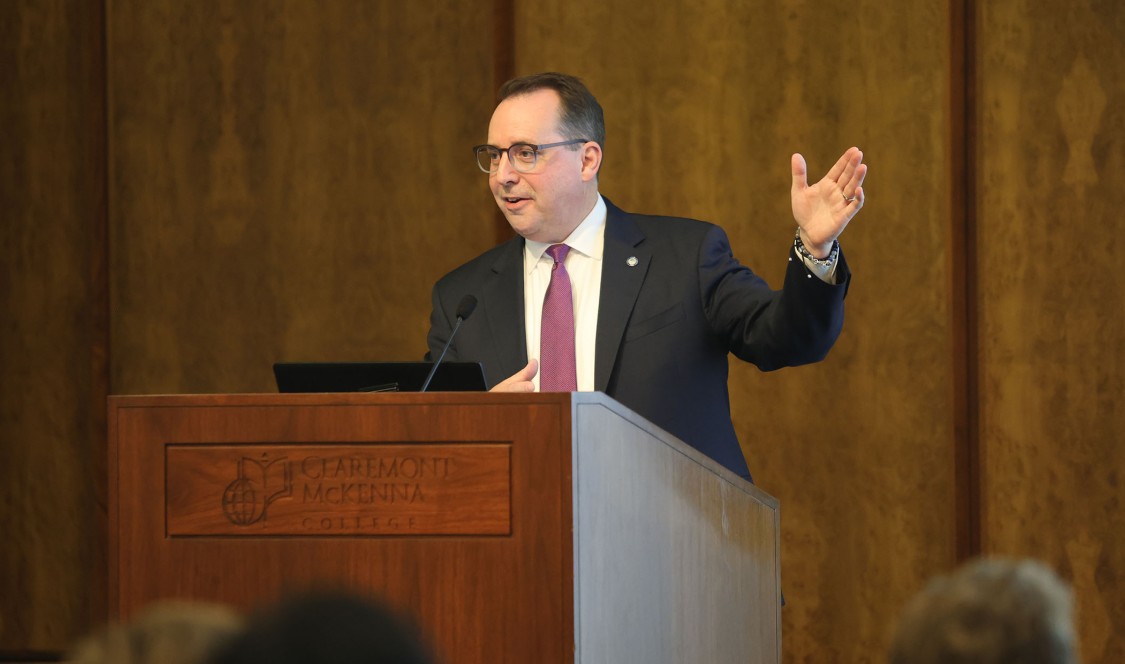Spanning 4,100 square miles, with more than 5.7 million registered voters, Los Angeles County ranks as one of the largest and most complex county election jurisdictions in the United States.
“We’re larger than most state governments, and that creates some interesting challenges and opportunities,” said Dean Logan, who as Los Angeles County’s Registrar-Recorder/County Clerk serves as the chief election official, appointed by the county’s Board of Supervisors, and tasked with managing a herculean voting operation. The department is responsible for registering voters; maintaining voter files; administering federal, state, local, and special elections; and verifying initiatives, referenda, and recall petitions.
Speaking at the Marian Miner Cook Athenaeum during the peak of the 2024 election cycle, Logan provided the audience with an “under the hood” perspective, offering insights into the colossal county’s distinct qualities, and detailing how Los Angeles County developed and implemented its own voting system to meet the needs of a diverse population.
Logan’s Athenaeum presentation, “Voter-Centered Election Administration: Navigating Disinformation, Polarization, and the Dynamics that Drive Voter Participation,” was co-sponsored by the Kravis Lab for Civic Leadership and the Rose Institute for State and Local Government at CMC.
Speaker quote
After the 2008 presidential election, Logan “realized that our voting equipment and our voting model in Los Angeles County was at the end of its life cycle, and in some cases, was very much on life support, and that if we didn’t take some action to reimagine or replace our voting technology and our voting equipment, we would find ourselves unable to conduct elections in Los Angeles County, which, of course, would be unacceptable,” he said.

The solution? The county would build its own system, Voting Solutions for All People (VSAP), and began by assessing the needs of voters, and seeking their feedback.
“The law requires us to have one accessible piece of voting equipment in each voting location,” Logan explained. “It requires us to have voting materials available in a particular language. So, we could just check the box and say we did that. But for many years—for decades—we never stopped to look at how effective we were. Were people actually using those translated materials? And, if you were a person with a disability, did you know about the accessible voting equipment and how to use it? And what we learned is, ‘No.’ In fact, oftentimes, that piece of accessible voting equipment sat in a corner, and the election workers crossed their fingers and hoped nobody would ask to use it, because it was a more complex part of the process, and in that sense, we were isolating voters who needed those services.
“Part of the idea of the Voting Solutions for All People as to go beyond checking the box of regulatory compliance and look at what is the intent and the purpose of that law, and how can we make the voting experience customizable and relatable and accessible to all of our voters.
“This was the philosophy behind the voter-centered approach.”
Student question
First-year CMC student Deborah Aguirre ’28 was curious “if there have been these initiatives other places in the country? And, if not, do you think there’s a future where this level of accessibility would be available to people, throughout California, and other states?”
Logan replied: “There have been a couple of other initiatives similar to this, in terms of the public ownership of the voting process, and some projects related to open-source voting equipment. I think that our project is—from a voting perspective—the only one that has looked at the voting experience as a whole. But to the latter part of your question, because we’re a very unique jurisdiction, not every jurisdiction needs what we need in L.A. County. So, we intentionally built the VSAP model on a module basis, so that parts of it could be taken and used elsewhere. And because it’s publicly owned, we can share it with other jurisdictions. And so, we’re very excited that there is some interest in particular in the accessible voting equipment. I think that there are some other jurisdictions that will be looking at possibly adopting that part.”

